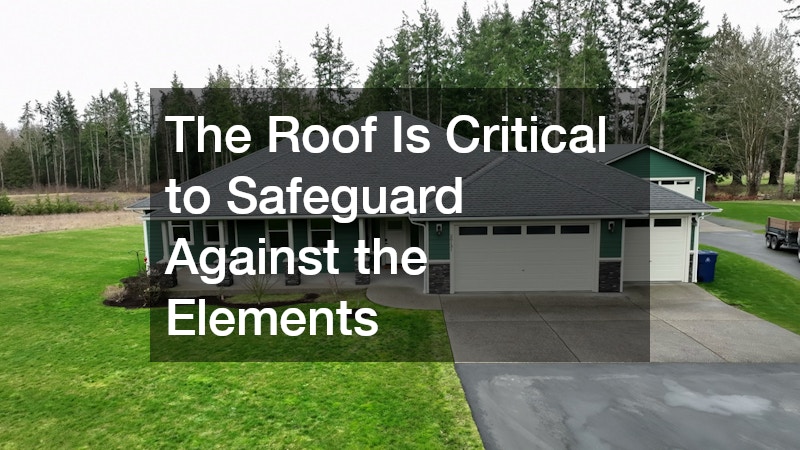When protecting your home, the roof is critical to safeguard against the elements. Over time, sun exposure, rain, wind, and temperature fluctuations can take a toll on roofing materials, leading to wear and tear that affects appearance and function. One way to extend the life of your roof and improve its performance is through roof coatings. These protective layers can help prevent damage, reduce energy costs, and enhance curb appeal.
However, choosing the correct coating type requires understanding your home’s needs, climate conditions, and budget.
Homeowners often find that selecting the right product involves more than picking a color or finish. The process includes considering the type of roofing material you have, the level of protection you want, and whether you prioritize durability, energy efficiency, or environmental impact. By understanding the options available and how they interact with your existing roof, you can decide to support both short-term performance and long-term value.
Understanding the Purpose of Roof Coatings
Roof coatings serve as a protective barrier between your roofing material and the environment. They are designed to reduce the impact of sunlight, moisture, and temperature changes while extending the overall lifespan of your roof. In addition to offering physical protection, many coatings are formulated to reflect heat, improving energy efficiency and reducing cooling costs. This makes them a wise investment for homeowners looking to prevent damage and enhance the comfort of their living space.
For example, if your home experiences frequent heavy rain, a waterproof roof coating can help prevent leaks and water damage that might otherwise lead to costly repairs. Reflective coatings can protect against UV damage and lower attic temperatures in areas with intense sun exposure. By aligning the purpose of the coating with the unique challenges your roof faces, you can select a solution that offers targeted benefits.
Evaluating Different Types of Roof Coatings
Several types of roof coatings are on the market, each designed with specific properties and applications in mind. Standard options include acrylic, silicone, polyurethane, and asphalt-based coatings. Acrylic coatings are known for their reflectivity and cost-effectiveness, while silicone coatings excel in waterproofing and weather resistance. Polyurethane coatings provide exceptional durability, and asphalt-based coatings are valued for their protective qualities on specific roof types.
The best choice often depends on your roof’s existing material and conditions. For instance, a flat roof in a humid climate may benefit most from a silicone coating to resist ponding water. On the other hand, a sloped metal roof in a sunny region might be better served by an acrylic coating to reflect heat and protect against fading. Understanding these distinctions will help you narrow your choices and ensure your selected product is compatible with your roof structure.
Considering Your Climate and Weather Conditions
Climate is one of the most critical factors in choosing a roof coating. Weather patterns directly influence the performance and longevity of a coating in your area. Coatings that perform well in dry, sunny regions may not be as effective in areas with high humidity, heavy snow, or strong winds. Choosing a product suited to your local climate ensures that it will provide the protection and benefits you expect.
For example, homes in the Southwest often benefit from highly reflective coatings that reduce heat absorption and lower air conditioning costs. Meanwhile, coatings with excellent corrosion resistance are essential in coastal regions with salt-laden air to prevent metal roof degradation. By matching the coating’s properties to your environment, you can maximize its effectiveness and extend the lifespan of your roof.
Comparing Costs and Long-Term Value
While initial cost is essential, it should not be the only factor in your decision-making process. Some coatings may be more expensive upfront but provide greater durability, lower maintenance needs, and higher energy savings over time. A budget-friendly product that requires frequent reapplication may cost more in the long run than a premium coating with a longer lifespan.
For instance, investing in a high-quality silicone coating might mean spending more initially, but the long-term savings on repairs and energy costs can outweigh the extra expense. Additionally, some coatings can qualify for tax incentives or energy efficiency rebates, further improving their value. You can choose a product that balances affordability with performance by looking beyond the price tag.
Selecting the right roof coating for your home requires careful thought and research. By understanding the purpose of roof coatings, evaluating the various types available, considering your climate, comparing costs, and seeking expert advice, you can make an informed choice that enhances your roof’s performance and longevity. A well-chosen coating not only shields your home from the elements but can also improve energy efficiency, reduce maintenance needs, and add value to your property.
The right roof coating meets your specific needs and is applied with skill and precision. With the proper product and application, you can protect your home’s most important structure for years while enjoying comfort and cost savings.





